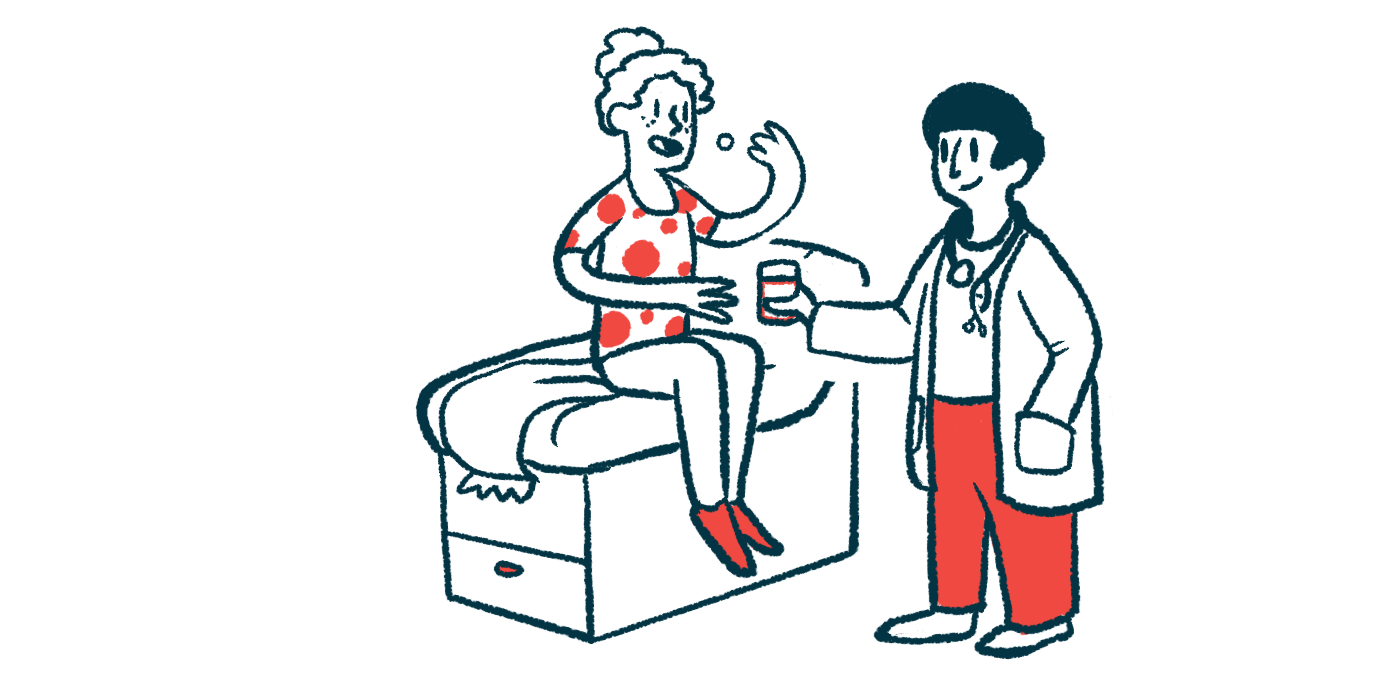Daily Life Disruptions a Burden for Women With Sporadic AHP Attacks
Study finds patients experience frequent, severe symptom 'flares'
Written by |

Women with acute hepatic porphyria (AHP) who experience sporadic attacks reported facing chronic symptoms and significant disruptions to their daily activities around each attack, according to a recent study.
During patient interviews, these women also frequently described symptom “flares” that they did not consider to be an acute porphyria attack, but were nonetheless severe.
“The reported severity of these symptoms and impacts suggests that the humanistic burden of AHP [with sporadic attacks] is substantial and may lead to a significant decrease in health-related quality of life in these patients between acute attacks,” the researchers wrote.
“The presence of flares that do not reach the level of what is considered an acute attack by patients is a unique finding of this study not reported elsewhere and requires additional investigation,” the team added.
The study, “Patient Perspective on Acute Hepatic Porphyria with Sporadic Attacks: A Chronic Disease with Substantial Health-Related Quality of Life Impacts,” was published in the journal Advances in Therapy.
Investigating sporadic attacks in AHP
AHP encompasses four porphyria types: acute intermittent porphyria (AIP), variegate porphyria (VP), hereditary coproporphyria, and ALAD porphyria. Broadly, all four types are characterized by severe, acute attacks consisting of a range of symptoms. Common among them are abdominal pain, vomiting, muscle weakness, high blood pressure, and altered mental status, all usually severe.
But patients also may experience chronic symptoms in between acute attacks.
Many AHP patients overall report significant declines in health-related quality of life. This is largely due to disruptions in daily activities, the disease’s emotional burden, sleep problems, and medical expenses.
Most studies, however, usually focus on patients with frequent attacks — at least three per year — so the experience of those with more sporadic attacks is not as well-understood.
To fill this knowledge gap, a research team — which included porphyria patients and caregivers — conducted semi-structured telephone interviews with AHP patients experiencing less frequent attacks.
Participants with these sporadic attacks were recruited and enrolled through two patient advocacy groups: the American Porphyria Foundation and the British Porphyria Association. Sporadic attacks were defined as having at least one attack in the last two years, but not more than two per year.
A total of 14 women, ages 23–72, with a mean age of 45.4, were interviewed and included in the analysis. Two of the women had VP, while 12 had AIP.
The most commonly reported symptom was fatigue or tiredness (13 women), which ranged in frequency from daily to every two months.
“You don’t have a great deal of energy at times,” one participant stated. “At times, I don’t have any energy at all. I am very sleepy. I sleep a great deal of the time — more so, I think, than most people.’’
A common theme in the interviews was the impact of fatigue on daily life, the researchers noted.
“I’m always tired and I try everything I can to try and get through the whole day and it’s really hard to keep a full-time job and try to do normal daily activities due to the pain that I feel, as well as being tired,’’ said one of the respondents.
Various types of chronic pain were commonly experienced, with some type of pain reported by 13 of the women. Other frequently reported symptoms were nausea (eight women) and constipation (seven patients).
For managing many chronic symptoms, interviewees reported they used medications or other treatments, some of which required a prescription from a physician.
Patients: ‘Flares’ not an acute porphyria attack
Participants often described “flare-ups” or “episodes” marked by an increased severity, frequency, and/or duration of one or more chronic symptoms, but not at a level they considered to be an acute attack.
Such flares, while described in different ways and with varying degrees of severity, were experienced by seven women (50% of patients). These women said they used various strategies to prevent a flare from becoming a full-blown porphyria attack.
“If I take it easy and — or take a day off work or do — you know, adjust what I’m eating or trying to get more sleep, it’ll usually calm down. But it’s when I try to do those things and the pain continues to get worse that it then turns more into an attack,” one woman said.
Interviewees noted that they experienced significant chronic impacts on their lives as a result of ongoing symptoms and flares. The most frequently reported impact was difficulties in performing daily tasks, which was cited by 11 women.
A loss of work ability was experienced by 1o women. One woman recalled losing her dream job as a result of recurrent attacks.
“That’s what I trained for, for many years and had been my lifelong ambition. So that’s what it means to me. More than the pain and everything else, it’s the fact that I lost the opportunity,” she said.
Other impacts, reported by at least 50% of the women, included anxiety, depression or sadness, difficulty exercising, and the need for a special diet. Half of the women also reported that the disease had a negative impact on their finances.
The study highlights that “even patients who only experience attacks sporadically also experience significant impairment,” the researchers wrote.
“These data also highlight why regular monitoring of patients with AHP regardless of attack rate may be required and underscores the need for additional research to further understand the unmet need in the sporadic attack population,” the team concluded.







